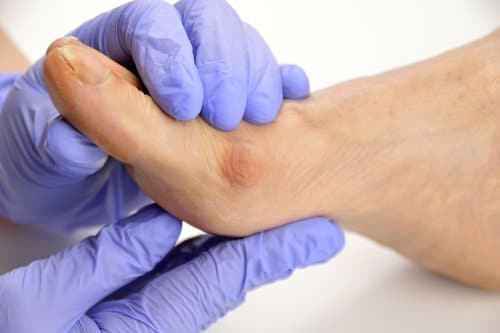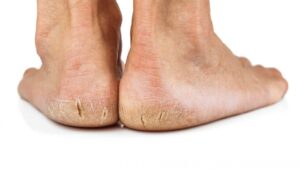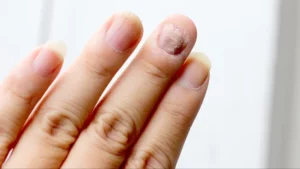Do you have a massive bump jutting out of your big toe and think that it is about time that you do something about it? Foot doctors call the condition “Hallux Valgus” or what is more commonly known as a bunion. So what causes bunions and how do you get rid of them? Before we get to the answers, it is important to understand what is causing the problem in the first place.
So the question remains – what causes bunions on outside of the foot? Bunions take shape when the bone or tissue in the joint at the base of the big toe becomes dislocated. Most foot doctors agree that years of abnormal motion and pressure on the joint forces the big toe to bend toward others and contributes to the problem. The movement induces an often-painful bulge over the joint located at the bottom of the big toe. The latter is an area of the foot bears much of the weight while walking and running so bunions can result in severe and continuous pain. The joint may become so sore and stiff that shoes can be too painful to wear.
More about what causes bunions
Most people tend to think that what causes bunions to grow are hereditary factors as the problem often runs in families but it can also be the result of the way we walk and the shoes that we wear. It is interesting to note that women are more likely to develop bunions compared to men as they age. People with supple joints seem to endure their bunions longer, but others with stiff joints or arthritis have more trouble with their bunions and may develop pain earlier.
Should you develop a bunion, speak with your family physician who may refer you to a podiatrist. Who diagnose and treat infirmities of the foot, ankle, and related structures of the leg.
Should you consider bunion surgery?
Bunions are permanent unless surgically corrected. However, there are some steps you can take to become more comfortable or slow a bunion’s development. For many people, it may simply be a matter of using better and more comfortable shoes. Select low-heeled, comfy shoes that provide plenty of space for your feet and offer broad support.
A couple of more things that you can do to relieve the pain and pressure on your bunion:
- Lose weight; shedding a few kilogrammes reduces the strain on your feet
- Take care of the bunion with a moleskin or gel-filled pad, which you can buy in a drug store.
- Over-the-counter curved supports or prescription Orthotic devices.
- Put on a splint at night to hold the toe straight and alleviate discomfort.
- Upon the guidance of your doctor, you can take non-steroidal anti inflammatory drugs like ibuprofen as a temporary measure for managing the pain and discomfort
If your bunion problem persists even after trying all conservative treatment therapies then it is time to think about surgery.
Foot doctors can do the surgery on mild or severe circumstances. When patients come in at an older age, usually it is because the bunion is causing different problems. For most patients that do get the surgery, the pain is continuous or can create problems with the second toe. The aim of surgery is to restore the large toe into its proper position. A surgeon puts bones, ligaments, tendons and nerves back into appropriate order, and removes the bump.
Are you looking to see a reliable foot doctor for your bunion problem? You can expect no less out of “Modpod Podiatry”! Call us today on 1300 809 874 to arrange a consultation.










